World Art Day is celebrated every year on April 15, on the same date of the birthday of one of the greatest artists of all time, Leonardo da Vinci.
There is no doubt that Italy is exactly the place to be on such a special day. There are literally hundreds of priceless masterpieces scattered in the museums and sites throughout the territory, so why don't take advantage of this special celebration to see them up close?
To help you choose where to start, here is a top 10 of the artworks that have made the Italian cultural heritage unique, the ones that everyone should see at least once in a lifetime.

Why to celebrate World Art day

Art is not just something found in museums or books, on the contrary it's a passion that's always alive and present, inclusive and capable of overcoming obstacles and differences because it can be practiced and enjoyed by anyone. It's also said, and it's certainly true, that it's very good for your health!
World Art Day was announced in 2012 by the IAA (International Association of Art) and indeed it serves to involve people or push them to share moments together through the most diverse themed activities. Debates, workshops, visits to museums, cultural events of all kinds are always excellent opportunities to get to know art in all its facets or perhaps give free rein to creativity.
In Italy you have an endless number of opportunities to get closer to this wonderful world, from big cities to small villages you will always find something wonderful to see. Let's go immediately to discover the top 10 Italian masterpieces not to be missed on the occasion of World Art Day.
10. Veiled Christ
Let's begin our journey among the masterpieces of Italian art with one of the most evocative works of all. It is the Veiled Christ, kept in that incredible casket of treasures which is the Sansevero Chapel in Naples.
An aura of mystery has surrounded Prince Sansevero for years, to whose family the chapel belonged. Brilliant and cultured, he was passionate about alchemy so that perfection of the statue that now occupies his chapel's central nave has been attributed for a long time to some obscure process, capable of transforming fabric into marble.
The artwork, actually, is undoubtedly entirely in marble. It's simply due to the talent of its author, the sculptor Sammartino, the incredible veil that covers the body of Jesus and which appears so thin and impalpable as to reveal not only the beautiful face of Christ, but also his wounds.
Visit the Veiled Christ in Naples9. The Donatello's David
A visit to the Bargello Museum in Florence is certainly a great way to celebrate the World Art Day. Here, among many wonderful pieces of art to admire, there is an absolute masterpiece: Donatello's David.
The bronze sculpture represents the young David who has just defeated the giant Goliath and who certainly doesn't do much to hide his pride and the bravado typical of youth. It's therefore also an allegory of victory and in fact it was commissioned by Cosimo de' Medici soon after the victory of Florence against Milan in the Battle of Anghiari.
This statue also has an important record. At the time, i.e. in the mid-1400s, it was the first one to represent a full-relief nude since the days of ancient Rome, so it can be said that it was one of the works that started the Italian Renaissance.
Visit the Bargello Museum8. The Basilica of Assisi's frescoes
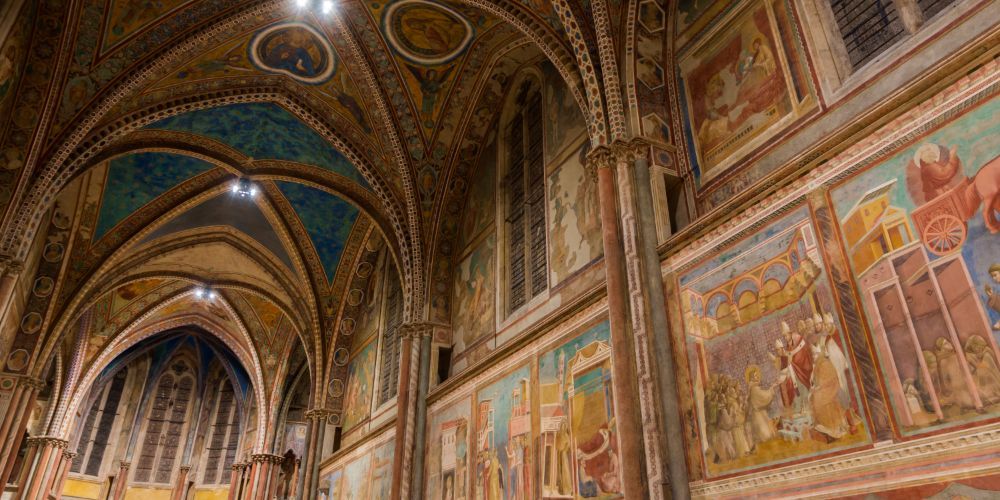
A trip in Umbria, the green heart of Italy, is always a great idea. To its wonderful countryside and excellent cuisine you can add priceless masterpieces of art, including the Basilica of San Francesco which is located in Assisi.
This church has an interesting architectural structure on two levels, the Upper Basilica and the Lower Basilica; it's not only a beautiful example of Italian thirteenth-century Gothic, but also houses an incredible cycle of frescoes that cover the walls of the Upper Basilica like a gigantic illustrated book.
The lower band represents episodes from the life of St. Francis and is commonly attributed to Giotto, the revolutionary artist also celebrated by Dante in his Divine Comedy.
Visit Assisi's frescoes7. The Seven Acts of Mercy
World Art Day cannot be properly celebrated without at least mentioning Caravaggio, a seventeenth-century painter, passionate and intense, with a life turbulent to the point of earning him the reputation of a cursed artist.
One of his most important and engaging works can be found in Naples, in the church of Pio Monte della Misericordia, in the historic center.
The painting, The Seven Works of Mercy is a huge canvas over three meters high. It's an emblematic work because it was the first to represent seven scenes simultaneously, linked to each other, for a harmonious and balanced result despite the pressing pace of the story.
The protagonists, inspired by the reality of the poorest slums of Naples, tell of a suffering but vital humanity, and of the hope of redemption through good deeds.
Visit Pio Monte della Misericordia6. The Last Supper
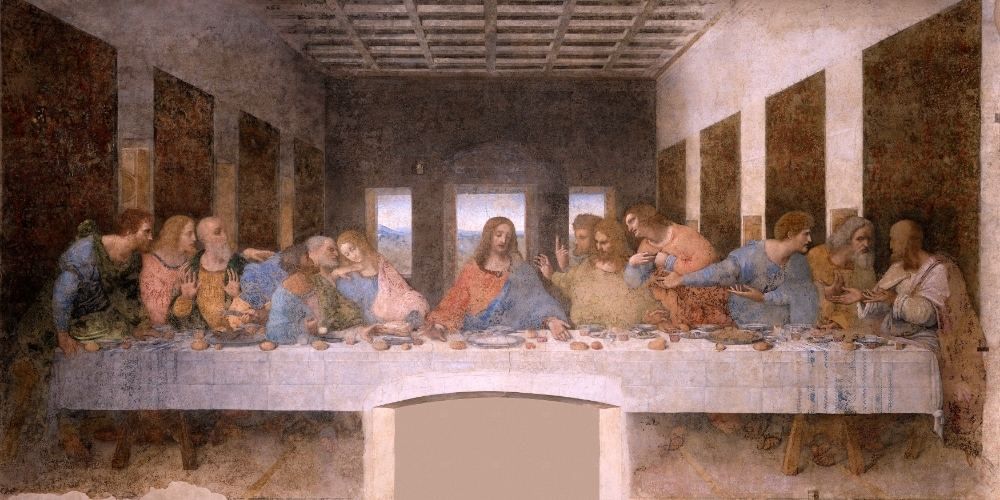
World Art Day is celebrated indeed on the day of the birth of one of the greatest artists in Italy and in the world. What could be better, then, than admiring one of Leonardo da Vinci's masterpieces?
His Last Supper is in Milan, more precisely in the Convent of Santa Maria delle Grazie. The painting was made with an experimental technique and for this reason it has been affected by the passage of time, despite this it still remains incredibly fascinating.
What makes the difference between this and many other artworks on the same theme is Leonardo's choice to dwell in particular on the moods of the characters, caught in the moment they learn of the betrayal of one of them. Inside a geometrically perfect perspective box we can let ourselves be involved in the emotions of a group of men at the center of which is Christ, human as never before in his moving resignation.
Visit The Last Supper5. Michelangelo's David
Another representation of the David, once again for the glory of Florence, arrived only sixty years after Donatello's one. Despite this, Michelangelo's David is a very different work from the previous one and not only for its huge dimensions (more than five meters in total) and because it's made of marble.
If Donatello represents a teenager, victorious after the battle, Michelangelo represents a young man in the moment before attacking the enemy Goliath. His fierce and focused gaze makes him a symbol of courage and strength. It's not so much a celebration of a victory as an incentive for future battles, metaphorical and otherwise.
This artwork should be seen in the World Art Day and not only, because it has become the symbol of Florence and in a sense of the whole Italy. Furthermore, thanks to a basically perfect anatomy that has set for centuries the standard of male beauty.
Initially it was located in Piazza della Signoria, where today there is a copy, while the original is exhibited in the Galleria dell'Accademia.
Visit Galleria dell'Accademia4. The Birth of Venus
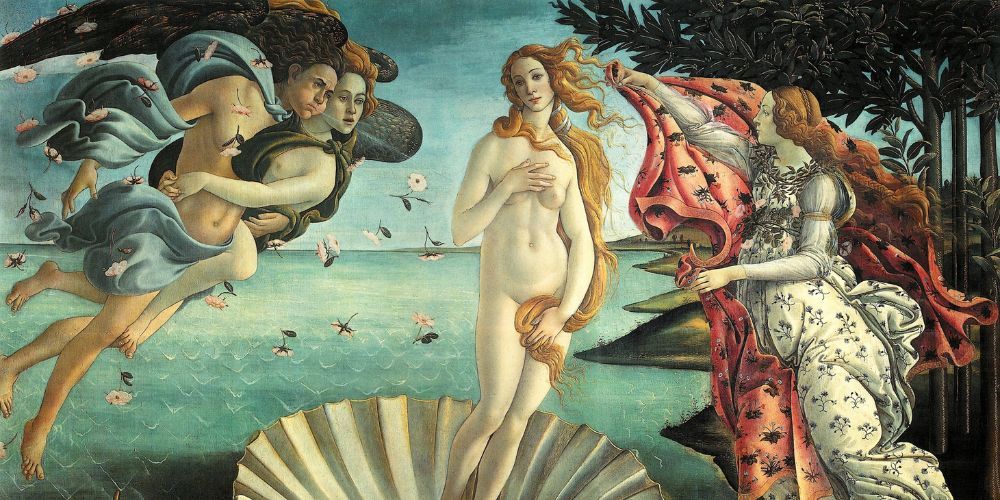
If Michelangelo's David established the canon of male beauty in art, the ideal of female beauty in the Renaissance is all in Botticelli's Birth of Venus.
An iconic painting to say the least, that represents a figure of a woman full of grace, sacred, with sweet eyes and hair moved by the Zephyr and Aura winds, represented in human form. In human form is also the Spring, that rushes with a cloack to cover Venus just born from the sea.
These fascinating mythological figures, Venus and Spring, both feature prominently in Botticelli's other masterpiece, The Allegory of Spring. You'll get the chance to see these two extraordinary paintings together, on the occasion of the World Art Day, in the Uffizi Gallery in Florence.
Visit the Uffizi Gallery3. The Pieta
A work of art is always a confession
There are works so perfect that it's almost impossible to describe them in words. Michelangelo's Pietà is certainly one of these and in fact it's considered one of the greatest expressions of art in the West.
The artis made it when he was only twenty-four years old, stating that he had seen it in the block of marble from which he only had to remove the excess.
The theme is certainly not new, but what makes this sculpture an authentic masterpiece are the emotions, real and vibrant even if they're represented with dignity and poise. The pain and love on the beautiful and young face of the Virgin who supports her son's body, serene even in death, tell of an intimate yet very intense moment. The rest is done by the voluminous and soft drapery that gives consistency to the figures and helps to define the classic pyramid shape.
You can admire this wonderful masterpiece in Rome, in St. Peter's Basilica in the Vatican.
Visit St. Peter's Basilica2. The School of Athens
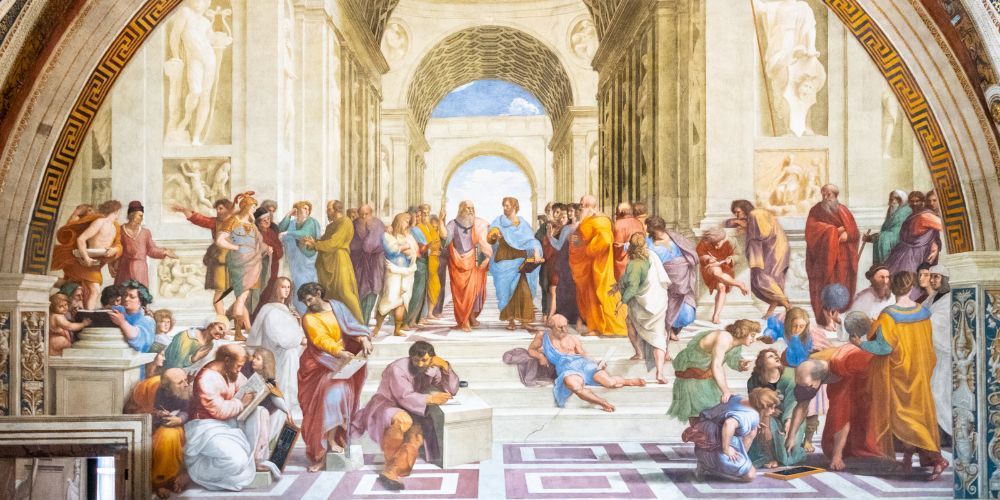
If you're in Rome for World Art Day, don't miss the frescoes in the Vatican Rooms, among which Raphael's absolute masterpiece, The School of Athens, stands out.
The large fresco brings together no less than fifty-eight characters in an ideal scene, representing the importance of research and rationality. Among them are the greatest philosophers and scholars of the ancient world, including Socrates, Xenophon, Alexander the Great, Pythagoras and many others to whom Raphael gave the face of his contemporaries.
In the middle, as protagonists, there are Plato and Aristotle "played" respectively by Leonardo da Vinci and Bastiano da Sangallo. Michelangelo Buonarroti has here the role of the philosopher Heraclitus, while Rafaello himself lends his face to the Greek painter Apelles.
Visit the Vatican Rooms1. The Sistine Chapel
An absolute must for World Art Day, but in general on any day of the year, is the Sistine Chapel.
Once again in the Vatican, this Chapel is almost an encyclopedia of Renaissance art. Completely frescoed on the walls and ceilings, it houses aweome works by Italian masters such as Perugino, Ghirlandaio, Signorelli, Botticelli, and their workshops, to then culminate with the vault and the altar wall which are painted by Michelangelo.
In fact, inside the Chapel there are the stories of Genesis, including the very famous Creation of Adam, or the portraits of the Prophets and Sibyls, all indeed painted by Michelangelo as well as the Last Judgment on the wall. This grandiose work represents more than three hundred characters but is also and above all considered a watershed work marking the peak and at the same time the end of the Renaissance.
Visit the Sistine ChapelAbout the author
Written on 13/04/2023

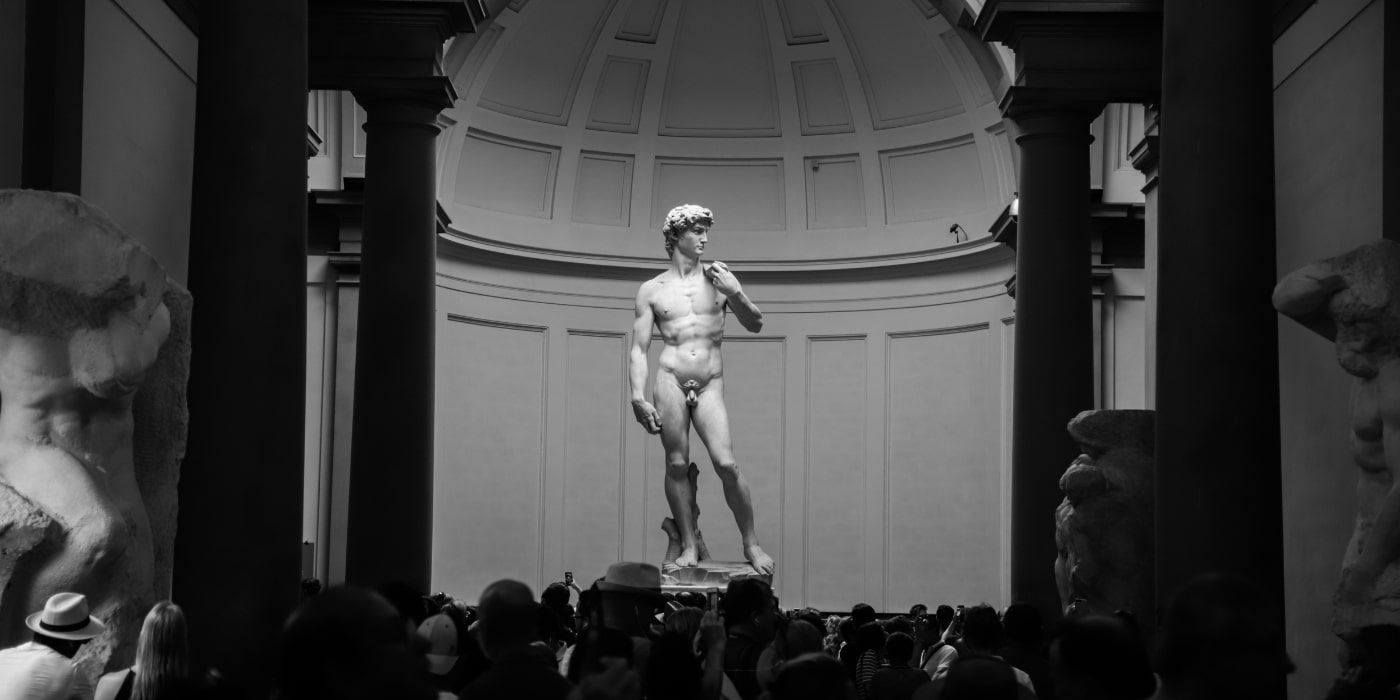

Paola Cirino
To mark the World Art Day let's go to discover 10 Italian masterpieces you just cannot miss